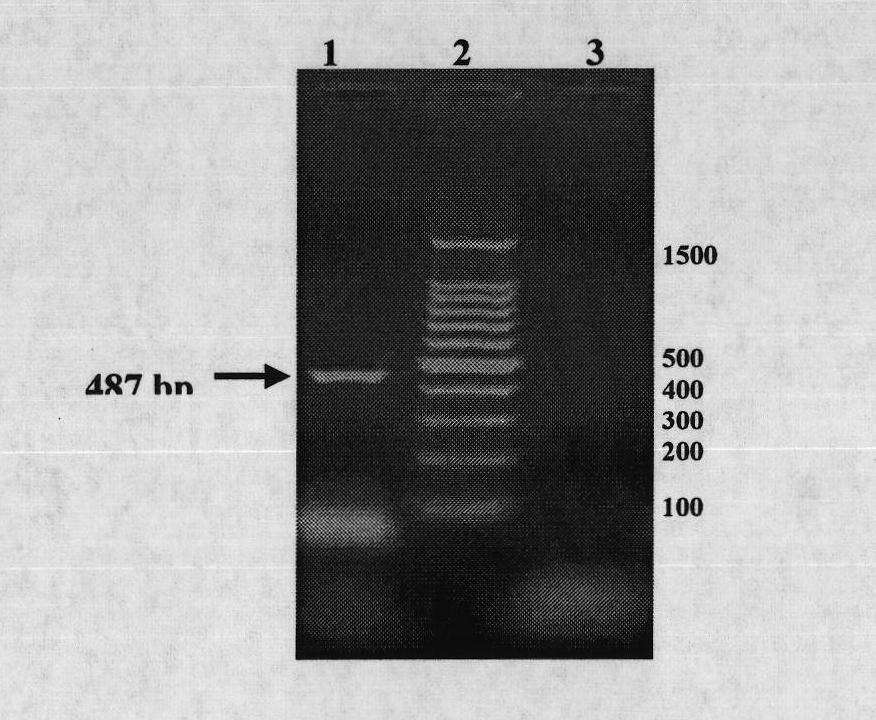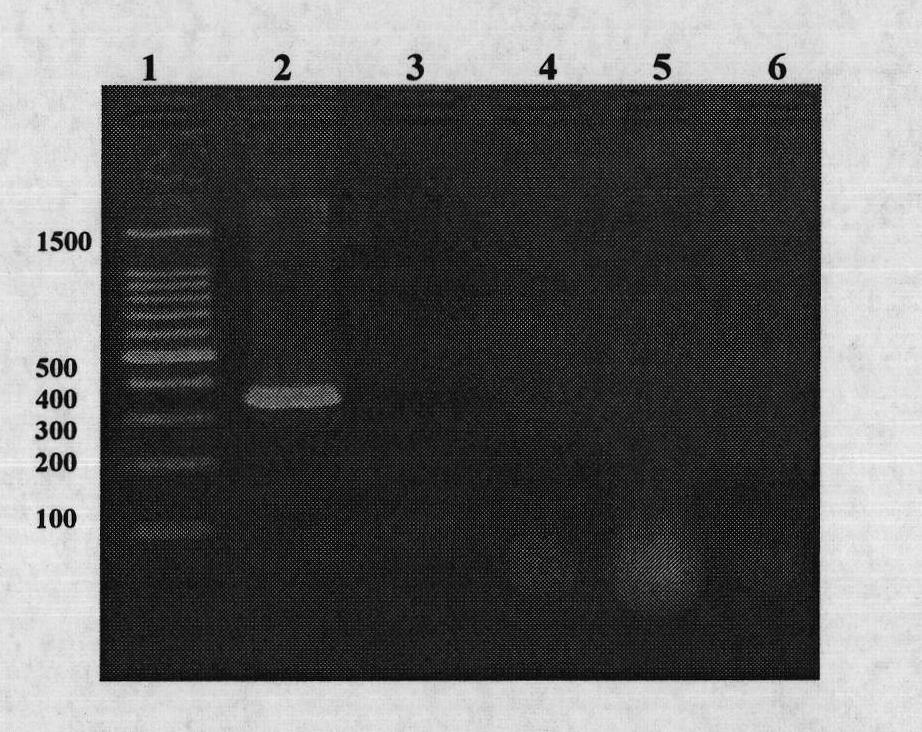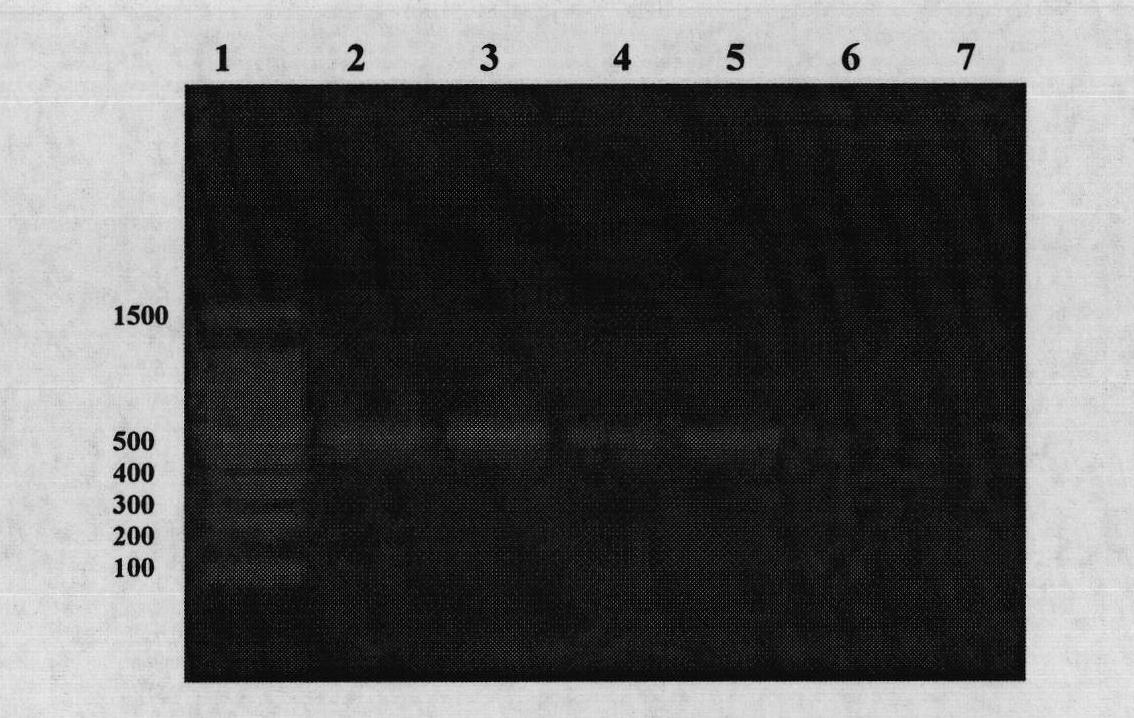PCR (Polymerase Chain Reaction) and fluorescent PCR rapid detection method of bee sacbrood diseases
A technology for cystic larvae and detection methods, applied in fluorescence/phosphorescence, biochemical equipment and methods, and microbial determination/inspection, etc., can solve the problems of low sensitivity and specificity, reduce drug residues, and facilitate detection method, control effect
- Summary
- Abstract
- Description
- Claims
- Application Information
AI Technical Summary
Problems solved by technology
Method used
Image
Examples
Embodiment Construction
[0029] The steps of the present invention are:
[0030] a, first collect adult bee specimens and larval specimens;
[0031] b. Primer design and synthesis:
[0032] Primers for PCR detection of bee cystic larvae:
[0033] SBV 1 5’-ACC AAC CGA TTC CTC AGT AG-3’
[0034] SBV 2 5'-CCT TGG AAC TCT GCT GTG TA-3'
[0035] Taqman probes and primers for real-time fluorescent PCR detection of bee cystic larvae:
[0036] SBV311F 5'-AAGTTGGAGGCGCGTAATTG-3'
[0037] SBV380R 5'AAATGTCTTCTTACTAGAGGTAAGGATTG-3'
[0038] SBV331T 5’-FAM-CGGAGTGGAAAGATTATCTACAATCCTTACCTCTA-TAMRA-3’
[0039] c. (1) Take a single bee, wash it with PBS solution for several times, discard as much excess PBS as possible, add 500 μL Trizol reagent, grind as much as possible with a grinder, then add 500 μL Trizol reagent, mix quickly, and stand at room temperature for 10 minutes ;
[0040] (2) Add 200 μL of chloroform, close the lid tightly, shake vigorously by hand for 15 seconds, and let stand at room ...
PUM
| Property | Measurement | Unit |
|---|---|---|
| diameter | aaaaa | aaaaa |
Abstract
Description
Claims
Application Information
 Login to View More
Login to View More - R&D
- Intellectual Property
- Life Sciences
- Materials
- Tech Scout
- Unparalleled Data Quality
- Higher Quality Content
- 60% Fewer Hallucinations
Browse by: Latest US Patents, China's latest patents, Technical Efficacy Thesaurus, Application Domain, Technology Topic, Popular Technical Reports.
© 2025 PatSnap. All rights reserved.Legal|Privacy policy|Modern Slavery Act Transparency Statement|Sitemap|About US| Contact US: help@patsnap.com



